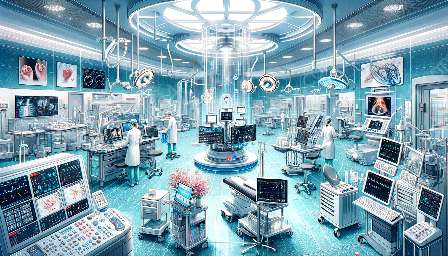The Endocrine System is a complex network of glands and hormones that play a crucial role in regulating various bodily functions. This comprehensive guide will delve into the intricate details of the Endocrine System, its connections to anatomy and physiology, and the significance of medical devices in diagnosing and treating endocrine disorders.
What is the Endocrine System?
The Endocrine System is a collection of glands that secrete hormones directly into the bloodstream to regulate various physiological processes such as metabolism, growth, and reproduction. Unlike the nervous system, which uses electrical signals to transmit information, the endocrine system relies on chemical messengers, or hormones, released by glands.
Hormones and Glands
The endocrine system comprises several major glands, including the pituitary gland, thyroid gland, parathyroid glands, adrenal glands, pancreas, and reproductive glands (ovaries in females and testes in males). Each gland produces specific hormones that influence different aspects of body function and development.
The Role of Hormones
Hormones act as chemical messengers that travel through the bloodstream to target cells or tissues, where they exert their effects. These effects can include regulating metabolism, controlling blood sugar levels, maintaining electrolyte balance, promoting growth and development, and regulating the body's response to stress.
Connecting Anatomy and Physiology
Understanding the Endocrine System requires a deep dive into the anatomy and physiology of the glands and hormones involved. The anatomical structure of glands and their intricate connections with other body systems are essential for comprehending how hormones influence physiological functions.
Anatomy of Endocrine Glands
The anatomical study of endocrine glands reveals their location, structure, and interconnections with blood vessels and other organs. For example, the pituitary gland, located at the base of the brain, is connected to the hypothalamus and has a vital role in hormone regulation and control.
Physiological Functions
The physiological functions of the endocrine system involve the coordination and integration of various hormones to maintain homeostasis. This includes the regulation of energy metabolism, reproductive functions, stress responses, and the overall balance of internal bodily processes.
Medical Devices and the Endocrine System
Advancements in medical technology have led to the development of innovative devices that aid in diagnosing and treating endocrine disorders. These medical devices play a crucial role in monitoring hormone levels, imaging the endocrine glands, and delivering targeted therapies for endocrine-related conditions.
Diagnostic Devices
Medical imaging devices such as ultrasound, CT scans, and MRI are used to visualize the structure and function of endocrine glands. Additionally, laboratory tests including hormone assays and stimulation tests help in diagnosing hormone deficiencies or excesses.
Treatment and Monitoring Devices
For the treatment of endocrine disorders, medical devices such as insulin pumps, hormone replacement therapy delivery systems, and continuous glucose monitoring devices are instrumental in managing conditions such as diabetes and thyroid disorders.
Conclusion
The Endocrine System is a marvel of interconnected glands and hormones that exert a profound influence on almost every cell, tissue, and organ in the body. Understanding the complexities of the endocrine system in relation to anatomy, physiology, and the advancements in medical devices is essential for diagnosing, treating, and managing endocrine-related conditions.


